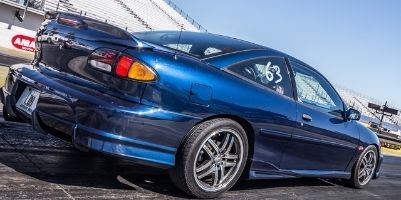HPT has great help files if you're a V8, but not so much for us.
some insight into the workings of the ecu and maximizing mechanical modifications;
the ecu is programmed to work with the stock components.
every car (as well as its environment.. elevation, avg temp, etc) is different. so a generic tune is designed to get the job done as close to 100% of the time as possible.
this is why if you tune even a stock car, you can see gains out of it because you're tailoring the tune to your specific vehicle and location.
when you change something mechanically, you're doing what old modifiers and hot rodders in the past used to do.
the design of engines hasn't changed much in the past 100 years, and nothing can stop those mechanical principals from having some effect on power output.. even if the computer doesn't compensate.
for example; changing your cam profile will still help to optimize scavenging and cylinder filling.
Not touching the stock computer can't stop the mechanical principal a high performance cam works on, which is why you still see a gain even though you haven't tuned.
However, when you tune, you will maximize the modification by telling the computer what has changed.
MAF setups use a meter to physically 'count' air that enters the engine. So if you increase airflow (cams, headwork, turbo, supercharger, etc) the MAF will compensate (TO AN EXTENT) by telling the ecu more air is coming in.
Our setups cannot do that.
Most all motor modifications cannot significantly alter the stock VE maps to cause problems.. which is why tuning was so delayed around here and only became imperative after HPT came out and people started to realize the importance of tuning.
With a turbo or a supercharger, tuning is imperative.
for an n/a car, tuning isn't as important, but without it you may be missing out on something like 15% of the power you COULD have if not more.
don't be surprised if you need to upgrade your injectors to a larger size or do a bit of fuel tweaks to get your AFR where it should be.
but back to the ecu..
our ecu's do not change for airflow. they have their map based on TPS and RPM and thats it. The only thing the ecu decides to do is turn fuel trims on (closed loop.. cruise) or turn them off (power enrichment). It also shuts the injectors off when you're in gear and slowing down (Deceleration Fuel Cut Off - DFCO). There's other multipliers that are applied in certain instances, but nothing that can compensate for modifications so we'll ignore that information for now.
in terms of spark advance, those tables are preset too. However, the computer has two MAP ranges for ignition tables. And for each of those ranges is two tables.. one for higher octane, and one for lower octane. How the engine interpolates between the two I'm not sure, but if you knock a certain amount of times, the computer will lean towards the lower octane table and if you get no knock counts, the table will lean towards the higher side... which is how you can put different grades of fuel in the car and it won't alter how it runs too much because it adjusts the timing accordingly.
tuning is always something important, just not as critical for an all motor car (unless you go totally nuts)
anytime you alter the amount of air that can enter/exit an engine (basically any worthwhile mod), you should have the computer tuned to optimize the change.
I think people would be a lot happier with intake and exhaust systems if they went through the trouble of tuning the VE maps to reflect the change.
Cams and/or headwork should ESPECIALLY be on the list for tuning because while the car will still run, you'll see a big gain with tuning.
Edited 1 time(s). Last edited Friday, May 22, 2009 6:38 PM











